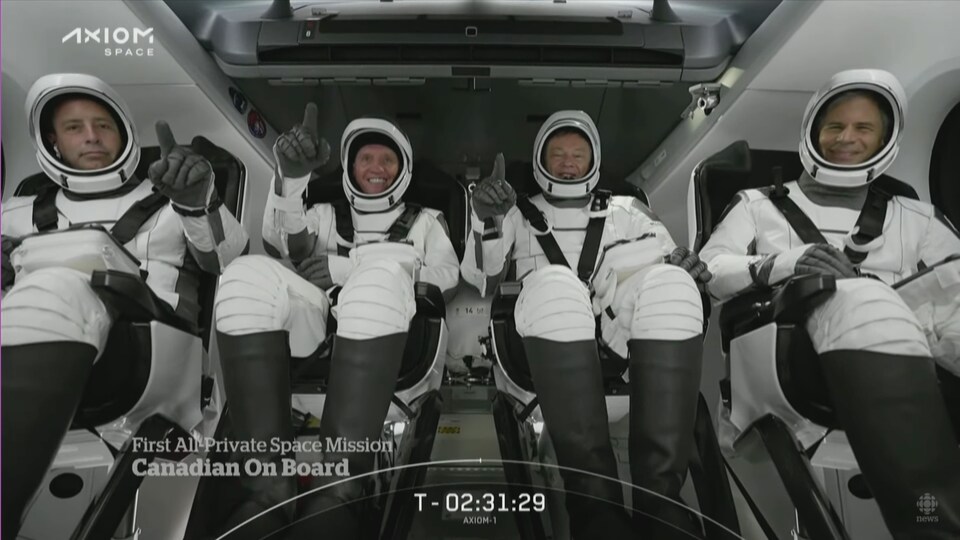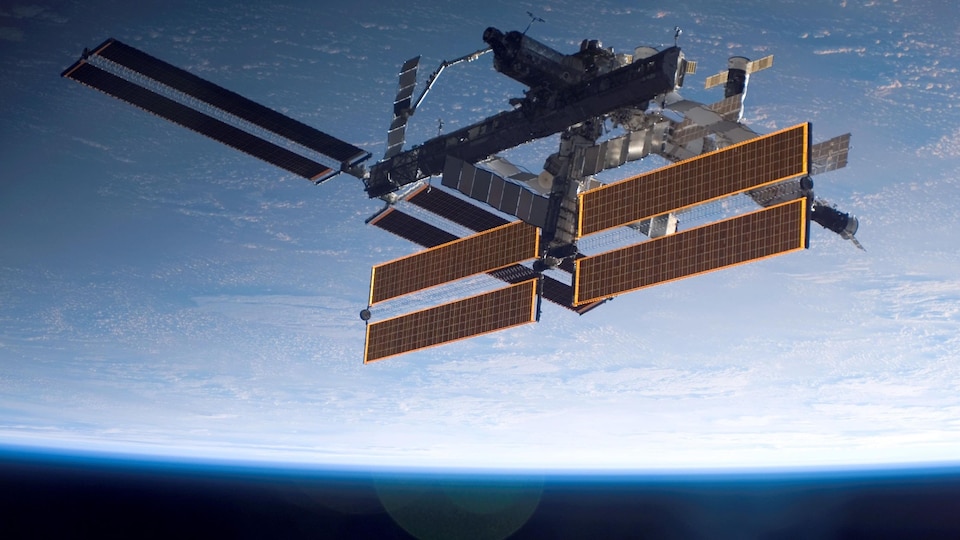Three businessmen, accompanied by a former NASA astronaut, landed in Florida on Monday aboard a SpaceX spacecraft, after spending more than two weeks on the International Space Station.
The capsule and its four passengers landed at sea around 1 p.m. after a dizzying descent. They were slowed by their entry into the atmosphere, then by large parachutes. They must be recovered from the Atlantic Ocean, outside Jacksonville, by a SpaceX ship.
Named AX-1, this mission organized by the American company Axiom Space was the first completely private to go to the International Space Station (ISS). Axiom bought the mode of transportation from SpaceX, and paid NASA for the use of its station.
A longer stay than expected
The four crew-three customers who paid tens of millions of dollars each, and former Spanish-American astronaut Michael Lopez-Alegria-left on April 8 from Florida. They arrived on the ISS the next day, and initially were supposed to only stay there for eight days.
But their departure had to be postponed several times last week due to bad weather conditions. Finally, they spent 15 days on the ISS, and 17 in total in orbit.
Thanks again for all the support during this adventure, which lasted longer and was more fun than expectedsaid Michael Lopez-Alegria, the mission commander, at the time of departure.
Next to him was American Larry Connor, head of a real estate company, Montreal businessman Mark Pathy, boss of investment company Mavrik Corp. and ex-Israeli pilot Eytan Stibbe, co-founder of an investment fund.
A rejection of the label tourists in space
The four men refused to be seen just as tourists in space.
They have actually conducted, they say, a whole series of experiments on the ISS, in collaboration with research centers and universities. This work focuses on aging and heart health. Canadian Mark Pathy also spent a lot of time on the ISS’s famous observation cupola, to photograph the Earth, according to the Station’s logbook, published on a NASA blog.
Monday was the fifth landing of a manned Dragon capsule. SpaceX now regularly flies NASA astronauts to the ISS.
Seven people currently remain at the Station: three Americans and a German who arrived thanks to a SpaceX ship (a crew called Crew-3), as well as three Russians who traveled aboard a Soyuz rocket. All will be joined in the coming days by four more astronauts (three American and one Italian), Crew-4. When the handover is completed, Crew-3 will descend back to Earth.
Elon Musk’s company also conducted another completely private mission last year (Inspiration4), but this one didn’t go to the Space Station, the four passengers only remained in the capsule for three days.
Towards the privatization of space travel?
The novices had already visited the ISS, especially in 2000. But they flew aboard the Soyuz, accompanied by cosmonauts in exercise. Last year, Russia continued this type of journey, sending a film crew, then a Japanese billionaire.
NASA for its part clearly encourages this movement to privatize low orbit. On the one hand, it wants to generate revenue thanks to these private missions (a second, AX-2, has already been approved). But more importantly, after the ISS retires around 2030, NASA wants to no longer have to oversee the operation of a space station itself, and pass the torch on to private companies. The American agency will only take its services to send its astronauts there, and thus be able to focus on long -distance exploration.
Axiom Space is one of the most advanced companies to position itself in this niche: it wants to launch the first module from its own station in 2024.
The structure will first be connected to the ISS, before becoming independent to ensure relay.
The experience accumulated thanks to the AX-1 thus represents an important first step, according to the leaders of Axiom Space, which is intended to lay the groundwork for many missions to come.
Source: Radio-Canada

